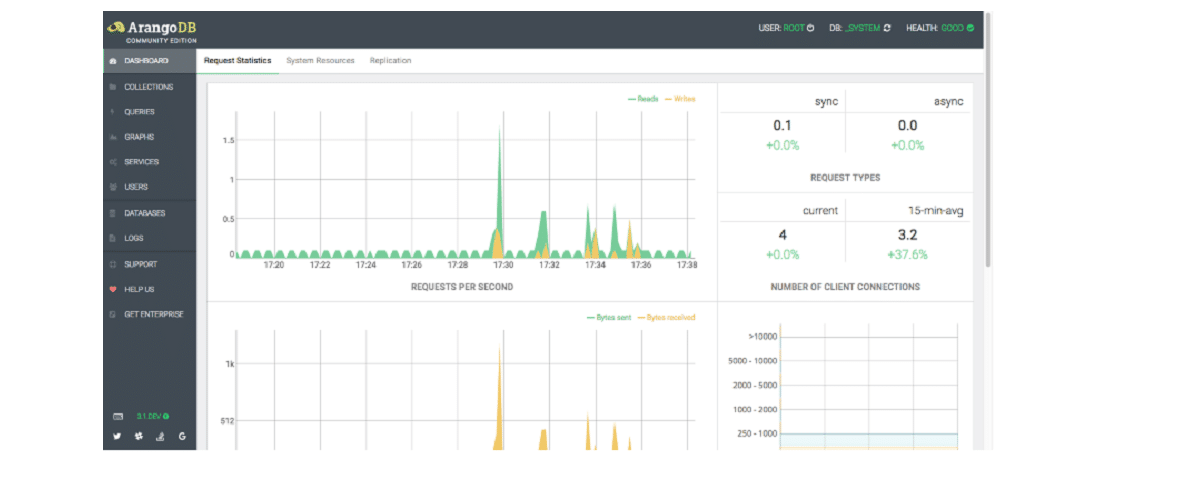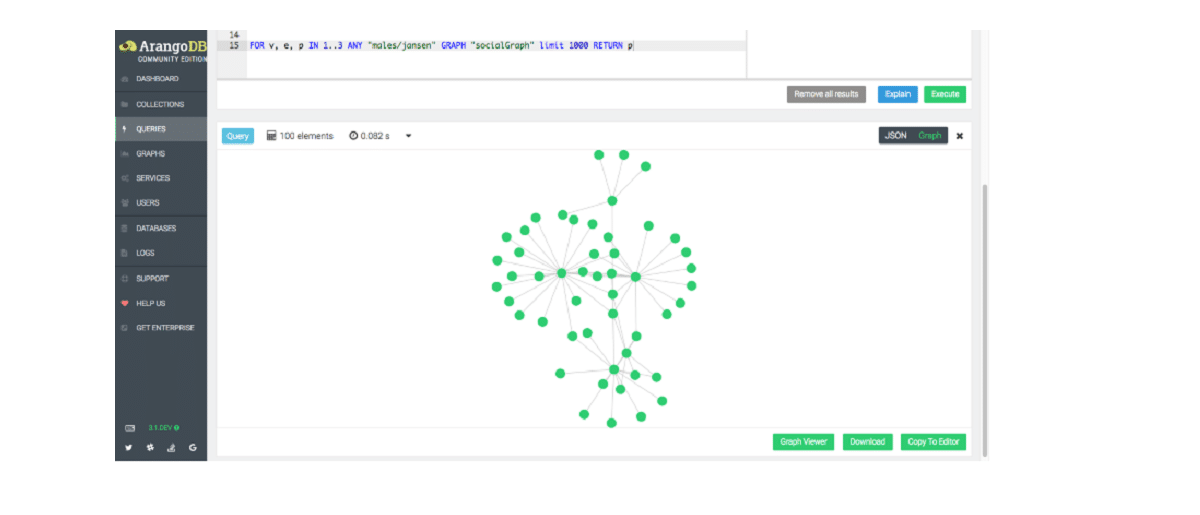
ArangoDB is a multi-model database developed by ArangoDB GmbH, this it has been called a universal database since the database system supports three data models (key / value, documents, graphics) with a database core and a unified query language AQL (ArangoDB Query Language). The query language is declarative and allows the combination of different data access patterns in a single query.
ArangoDB is a NoSQL database system but AQL is similar in many ways to SQL. Data storage methods meet ACID (Atomicity, Consistency, Isolation, Reliability) requirements, support transactions, and provide both horizontal and vertical scalability.
Database management can be done through the web-based interface or the ArangoSH console client. The ArangoDB code is distributed under the Apache 2 license. The project is written in C and JavaScript.
Among the key features of ArangoDB, we can find:
- The ability to do so without defining a data storage schema (no schema) - The data is structured in the form of documents in which the metadata and information about the structure are separated from the user data.
- Support for using ArangoDB as a server for web applications in JavaScript with the ability to access the database through REST / Web API;
- Using JavaScript for browser-based applications that access the database and for drivers that run on the DBMS side;
- Multi-threaded architecture that distributes the load across all CPU cores;
- A flexible data storage model in which you can combine key-value pairs, documents, and parameters that determine the relationships between records (means are provided to avoid the vertices of the graph);
- Various data presentation models (documents, charts, and key value chains) can be mixed in one query, simplifying aggregation of heterogeneous data;
- Join query support (JOIN).
- The ability to select the type of index that corresponds to the tasks being solved (for example, you can use the index for full-text search);
- Configurable reliability- The application itself can determine what is more important to it: higher reliability or higher performance;
- Efficient storage, fully utilizing the capabilities of modern equipment (eg SSD drives) and large caches can be used;
- Transactions- The ability to run queries for multiple documents or collections at once with optional transaction isolation and consistency;
- Support for replication and fragmentation: the ability to create master-slave configurations and distribute data sets to different servers depending on a specific attribute;
- To create microservices, the Foxx JavaScript framework is provided that runs inside the DBMS server with direct access to the data.
About the new version ArangoDB 3.6

CurrentlyThe database is in its ArangoDB 3.6 version, in which subqueries performance optimization is highlighted, as well as UPDATE and REPLACE operations.
As well as also the implementation of the possibility of parallel execution of AQL queriesWhich reduces data collection time distributed in different nodes of the cluster.
Also the implementation of late materialization of documents, which allows in some situations to eliminate the need to completely extract irrelevant documents.
When scanning documents, early discard of documents that do not match the specified filter is provided.
The ArangoSearch full-text search engine has been enhanced to support sorting based on data similarity. Added parser support to auto-complete queries, TOKENS () and PHRASE () functions were implemented for dynamic search query generation.
How to install ArangoDB on Linux?
For those interested in being able to install this database on their Linux distribution, can get corresponding packages to the Linux distribution they use or the source code for compilation from the following link.
In it they must make a registration to obtain the download links. Regarding the documentation on installation and use, the link is this.